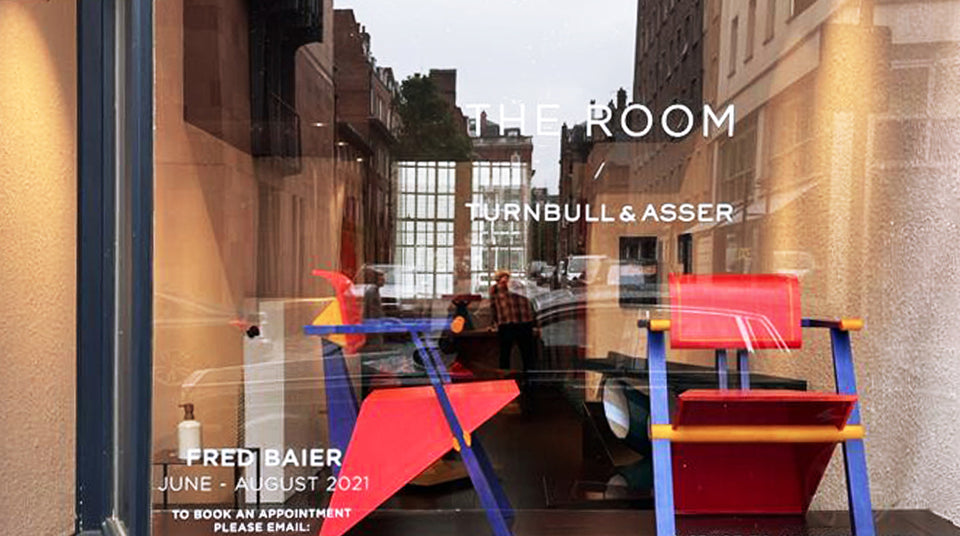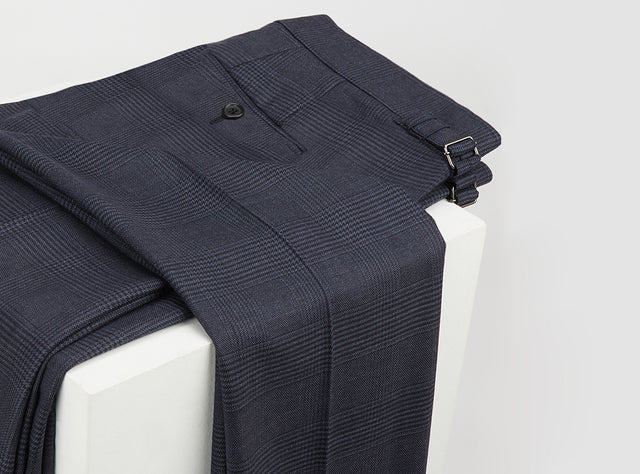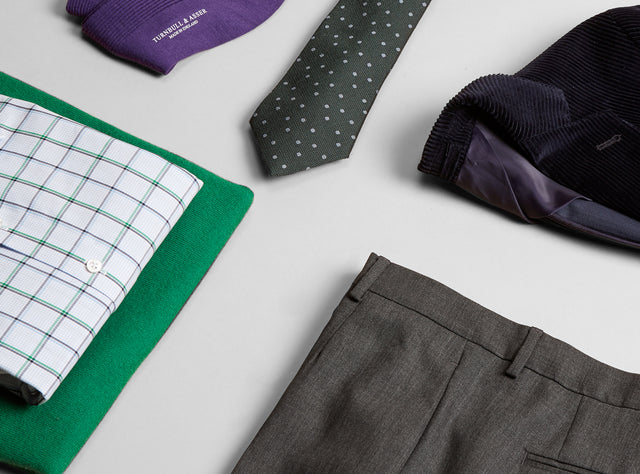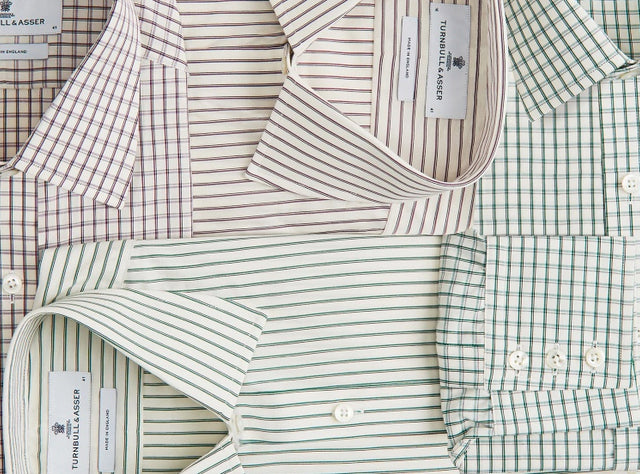The Room: Fred Baier
For the second exhibition in The Room, we have chosen to highlight the work of the British furniture artist Fred Baier. A graduate of the Royal College of Art, Baier's Avante Garde sculptural pieces focus on form, colour, and craftsmanship. We caught up with him to discuss his practice, his inspirations and more.
Turnbull: We are delighted to have you as our summer exhibition as part of our new concept – The Room. What are your earliest memories of craft, art, and design? Did you always know you wanted to pursue a creative career?
Fred: I had trouble with two things at school, spelling and authoritarians. But I was good at sport and technical subjects. My woodwork teacher said, “Be careful. If you want to earn a living from your talent you should make sure to oversee the intellectual property of what you make, or you’ll end up being told what to do all the time and you won't like it.” I asked him what 'intellectual' meant and he said, “Go to Art College. They’ll show you.” He was right. Art college was fantastic. My tutors were brilliant and showed me a whole new world of possibility intending that I took up their Bauhaus mantra Form Follows Function and become a designer. However, a rebellion was in the air and the mantra I produced was Form Swallows Function.

Please tell us a bit about your creative practice and what goes on in your studio day-to-day?
The studio is a two-minute walk down the road. I have a drawing, designing, writing, thinking office bit upstairs and a big space for making downstairs. My work is approx. 60% commission and 40% speculative but of course, it all overlaps. Every customer comes because they have seen what I do and wants a bit of Fred. The spec pieces are for people who like to go shopping and buy what they see. But the pieces also highlight - attract attention or - are bait to catch the interest of customers who appreciate the way I think and want either a bit of that tailored to their requirements or to embark on the adventure of commissioning and or collaborating.

You refer to yourself as a 'furniture artist' rather than a craftsman. Please explain to us what you mean by this?
I am a creator of contemporary furniture forms and structures. The journey each object takes me on visits territories concerning form, process, narrative, composition, proportion, function, history, place, colour, and, often, the digital. I suppose the pieces are intended more as pioneering furniture statements, than products - sculptural objects of the now. When I was graduating from the furniture design department at the RCA, I asked to be awarded an MA rather than the usual M Des because in all areas of artistic pursuit there is a spectrum of practice from the personal/arty/expressive to the no-nonsense/generic/product/tool for living and I wanted to be at the arty end. I love and enjoy the making process and I do not deny that there is plenty of hand skill in my work. Fundamental developments often occur in a piece because of the craftsmanship involved but mostly it is a means to an end, not a job title.

What are the main influences on your work?
I like the whole issue of transference of imagery and ideas from other worlds and disciplines into mine. For example, engineering, motor racing and architecture. They are areas where people are making iconic statements using fresh often pioneering innovative ideas and techniques. Having moved to the country I now also look to the natural world for inspiration. For example, the structure behind plants. Then there are all those shapes and forms in the oceans which appear streamlined and futuristic – and I steal imagery from the science photo library. Back in the day, I was a guinea-pig designer helping with the development of the software for computer-aided design (CAD) In those early days it was best to keep the forms simple so the computing could cope. In so doing I began building a vocabulary of form using simplistic geometry the development of which is what all the pieces here in The Room are concerned with.

Your incredible work sits in collections of various prestigious museums such as the Victoria & Albert Museum and the Crafts Council, as well as numerous fantastical private commissions. How does collaborating with clients differ from your other, more organically generated, or personal work?
It does not differ much; my principles and processes are still the same. I suppose commissioned work may well include some extra, specific territories that need visiting during the creation of the piece and have a collaborative input element from the client.
There is an avant-garde, otherworldly nature to your work. A certain familiarity in the forms you use, but you push materials and colours to their surreal limits. What projects are you working on today, and what future projects can we look forward to?
Currently, I am just finishing off a pair of Nesting Cylinders which may well appear in the window of The Room shortly as will a new handed pair of the metal prism chair with the leafy vinyl imagery, called Park Life. I have a couple of other folded metal objects being made based on playful slicing through a cube and, I have a commission to "Pimp Up" one of those Lazy Boy reclining chairs. Long term? A new body of work in a new field of enquiry . . .
A selection of Fred's works will be on display and available for purchase at The Room, in Mayfair until the end of August.



